Is Coimbra worth visiting? In this article we give you 10 reasons for you to pack your bags already!
1. One of the oldest universities in Europe – and also a Unesco World Heritage Site
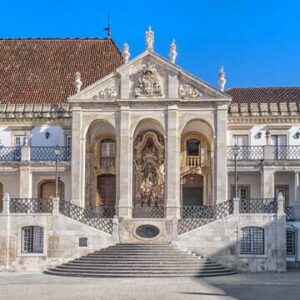
The University of Coimbra forms an architectural complex that, since 2013, has been included in the list of places recognized as World Heritage Sites by UNESCO.
The reason for this recognition is that we are standing before what was the first European University in the country (and one of the oldest in Europe), a centuries old institution that is closely connected to the history of Portugal.
The University has affirmed itself as a center of production and transmission of knowledge and culture, in a geographical area that extends over four continents, corresponding to the old Portuguese empire.
The University has a physical legacy which we can admire today in its architecture and art, but it has also an immaterial legacy, represented in its contributions to the Portuguese language, and role as the center for the diffusion of new ideas. It is due to the University that Coimbra is know today as the City of knowledge.
Over the centuries the University went through significant changes, influenced by the turbulence in the ideological and cultural scenario in which it is inserted, becoming a reflection of the passage of time and trends which we can see today in its architecture.
In total, there are 31 monuments which are recognized as part of the World Heritage Site. Among them are the Joanina Library, the Paço Real das Escolas or Royal Palace of Schools, and the Chapel of St. Michael.
You will have an opportunity to learn more about them in our tour, as well as to learn more about other monuments that tourists can sometimes miss!
2. A former capital of the Kingdom of Portugal
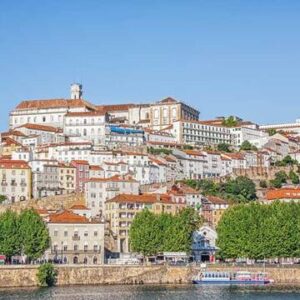
The city had an important role in the Christian Reconquista and in the formation of Portugal.
The city of Coimbra is intimately connected to the foundation of nationality, since the first king, D. Afonso Henriques converted the city into the capital of the kingdom. Coimbra was the official capital until 1255.
In 1064, Coimbra became the most important city in the defensive line in the Reconquista. In 1111, the father of the soon to be king, the count D. Henrique and his wife D. Teresa attributed a Foral -a privilege grant which conceded special rights to the city- to Coimbra, making it their residence.
Later in 1131 D. Afonso Henriques moved the capital from the city of Guimarães to Coimbra, which revealed to be of extreme importance to the independence and foundation of the Kingdom of Portugal, in 1143.
This important role led to the construction of some of the most beautiful and majestic national monuments, namely the Monastery of Santa Cruz. This Monastery, founded in 1131 with the incentive of D. Afonso Henriques, was the monastery with the most influence in the city, contributing for the cultural, economic, and political development of the Kingdom. It still is where the remains of the founders of the Kingdom rest.
You can still visit it today and pay homage to the founders of Portugal!
3. Vibrant student culture and unique student traditions

Coimbra is a university city, and that title also serves as its calling card. This reputation is well deserved, as there are many student traditions unique to Coimbra.
The parade of the Festa das Latas, the first event in the academic calendar is celebrated shortly after the beginning of the academic year, when the freshmen arrive in the city and are first faced with the local academic traditions. During the procession, the doctors wear the black suit and cape, while the freshmen wear disguises created by their “godfathers” and “godmothers”, as well as noisy cans tied to their feet.
The most famous event is the Burning of the Ribbons (Queima das Fitas) that began at the end of the 19th century, when Law students decided to burn the ribbons that marked their academic folders, as they would no longer need them the following year.
During their academic journey, students receive fabric ribbons that are attached to their student folders. Each course has a different ribbon color, and at the end of the academic period, a festival is held to celebrate this milestone in the students’ lives. The event lasts for several days and ends with the literal burning of the ribbons.
These traditions became a tradition throughout the country, but since the University of Coimbra is the oldest, it is here that they are celebrated most intensely!
4. A romantic city for lovers
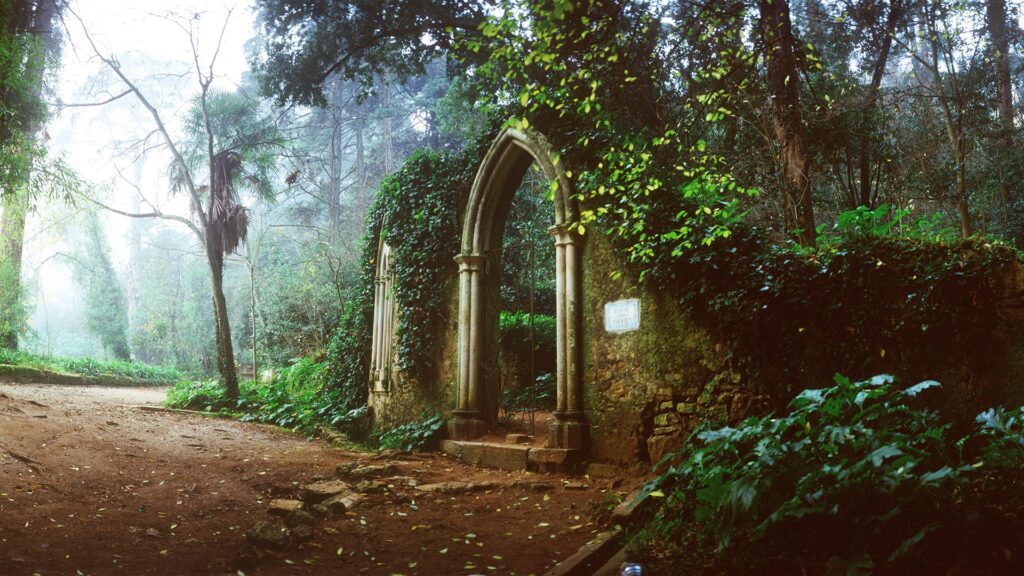
Coimbra was the stage for one of the most beautiful and tragic love stories that still inhabits the Portuguese imagination: the forbidden love between Prince Pedro of Portugal and Inês de Castro, a noblewoman from Galicia. It was in Coimbra that these two historical figures lived an important part of their romance, and for that reason, there are various places in the city linked to this forbidden love that endured against all odds. Legend has it that when Pedro became king, after discovering that it had been his own father, King Afonso IV, who ordered the death of his beloved Inês, he commanded that she be exhumed, crowned her queen, and forced the court to kiss her hand.
At Quinta das Lágrimas, there are two natural springs, one of which is connected by a channel to the Monastery of Santa Clara. The name, Fonte dos Amores (Fountain of Love), comes from the legend that this was one of the places where Pedro and Inês would secretly meet. The other spring is called Fonte das Lágrimas (Fountain of Tears), the result of a poetic creation by Luís Vaz de Camões in Os Lusíadas, where the writer mentions that the water flowing from the spring is the consequence of the tears Inês cried before being dismembered. The blood of the beautiful Inês is said to have stained the rocks in the fountain’s bed, making them red to this day.
The University itself holds various places that have served as the backdrop for meetings and reunions where vows of love are often exchanged. Not to mention the romantic aura the Mondego River lends to the city, with its banks being a favorite setting for leisurely walks, marked by hand-holding and tender glances. But perhaps the best example of all is the fado of Coimbra, that emblematic expression of the city, which almost always sings of love.
Quinta das Lágrimas is one of the most sought-after places in the city for lovers, but Coimbra is filled with romantic spots, such as its gardens, especially the Botanical Garden, the Penedo da Saudade, the Garden of the Mermaid (Jardim da Sereia), Dr. Manuel Braga Park, and the Green Park of the Mondego River (Parque Verde do Mondego).
5. Fado of Coimbra, the unique musical tradition of the city
If fado is considered the song of the Portuguese soul, Coimbra Fado is surely the music which marks the rhythm of the heart of the students’ city.

If you think you know the Fado of Coimbra because you’ve heard Fado before, do not be fooled. Coimbra’s musical tradition is special and different from other types of Fado you find across the country: it reflects a unique feeling of nostalgia, usually celebrated by people who lived and studied in the city of students.
This type of Fado is quite special. It’s considered a modified version of Lisbon’s Fado, more mournful and more nostalgic, and is part of the academic tradition, closely related to academic life and Coimbra’s special Portuguese guitar.
No written description can really convey all the emotion present in Coimbra’s Fado. The only way to understand it is to experience it live!
6. Haven for foodies
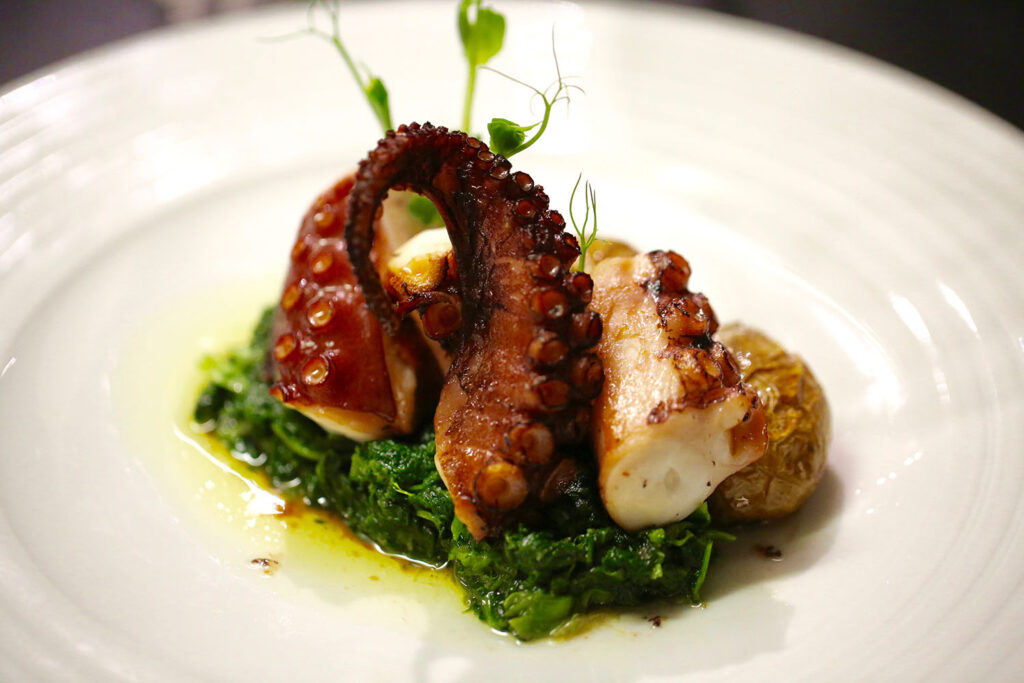
In the city of Coimbra the traditional tascas (small eateries akin to the spanish tapas) are still very much alive and in it you can try various small and affordable dishes. If you have you are looking for something sweet you are in the right place, as Coimbra has a strong confectionery scene rooted in tradition. Today you can find small sweets in every coffee shop influenced by the many monasteries and convents that existed here in the past. Some examples are the Crúzios, popular in the Santa Clara Café, or the Arrufadas, small cakes with the regional certification of authenticity. Some of the recipes are still made in the original way as it was done hundreds of years ago, so it is a great opportunity to taste history! Our talented local chefs have also adapted many ancestral recipes to modern tastes innovating with new ingredients and adding their unique spin to familiar flavors.
Coimbra has a growing gourmet scene as well, and as rich and diverse city you can find here flavors from all over the world made with a Portuguese touch!
7. Discover the incredible rich religious history
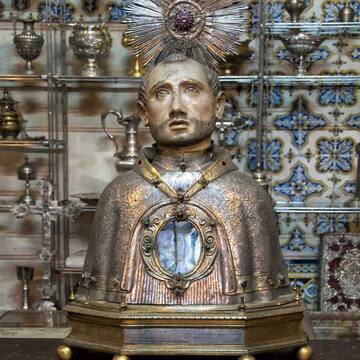
Despite being know as the cradle of Portuguese learning, Coimbra is equally a sanctuary of spiritual heritage, shaped for centuries by the presence and influence of Catholicism that played a vital role in the religious, cultural, and political history of the nation. From the imposing grandeur of the Sé Velha to the baroque elegance of the Sé Nova, Coimbra’s churches are not only places of worship but also testaments to the richness of our history.
Among them are the Church of St. James, one of the oldest in the city, which sits humbly in the heart of the old town. Built in Romanesque style and dedicated to St. James, patron of pilgrims, it recalls Coimbra’s connection to the broader network of Christian pilgrimage that stretches across the Iberian Peninsula. Another place which you must see is the Sé Velha de Coimbra, built shortly after the Christian Reconquista reclaimed the city from Moorish rule. It is here that the yearly Serenata Monumental is performed by students. This is one of the most important events in the calendar, because it marks the beginning of the Queima das Fitas which we talked about previously in this article.
Perhaps no event captures Coimbra’s religious spirit more than the Festa da Rainha Santa Isabel, held every two years in July. This festival honours Saint Isabel of Portugal, Queen, and benefactor to the poor, who spent her final years in Coimbra as a nun in the Monastery of Santa Clara-a-Velha. Canonized in 1625, her life is remembered for acts of charity, humility, and the famous Miracle of the Roses—when she was said to have turned bread into roses to conceal her secret acts of giving. During the festival, Coimbra is transformed. The streets fill with flowers, the image of Rainha Santa Isabel is solemnly taken in procession from Santa Clara-a-Nova across the Mondego River to the Monastery of Santa Cruz, accompanied by choirs, clergy, city dignitaries, and thousands of people.
Which church are you most excited to visit? In our tour you can learn all about the peculiarities which make them so unique!
8. The City of Knowledge offers a strong literary scene

Coimbra has always been a privileged crossroads for the Portuguese intellectual elite, having played a key role in the education of several generations of writers and other intellectuals from the Lusophone world. In the city’s gardens and cafés, and in student residences scattered across the upper part of town—republics and boarding houses—they gathered for lively discussions, debating issues that contributed to enriching the national literary landscape.
Their experiences and everyday surroundings were also reflected in their works and characters, serving as both inspiration and backdrop for their literary plots. Among the most notable writers are Antero de Quental, Eça de Queirós, António Nobre, João José Cochofel, José Régio, Miguel Torga, and Manuel Alegre.
One of the literary movements born in Coimbra that shaped the perception of literature in Portugal in the second half of the 19th century was the so-called Questão Coimbrã (Coimbra Question), carried out by the “Generation of ’70,” a group of intellectuals who were then studying at the University of Coimbra. This movement brought to national literature the new European ideas of Realism and Naturalism, which deeply displeased their predecessors (many of whom were their professors at the university), who were staunch ultraromantics. What this new generation called the modernization of literature, the conservatives deemed as mere exhibitionism.
Coimbra gave birth to this new literary movement that marked the break from a comfortable and convenient view of art, giving rise to a new, more independent and socially engaged artistic movement!
9. Vibrant downtown and unique street art
Despite all of its history, Coimbra is no city of the past, and street art is a reflection of a city that is beaming with life.
Street art has become a vibrant and expressive layer of the city’s cultural landscape. Far from mere acts of rebellion, the murals, stencils, and graffiti scattered throughout Coimbra’s old alleys capture the pulse of a younger generation eager to leave its mark.
From the crumbling walls of the Baixa to the more hidden corners of student republics, urban art invites dialogue, protest, and poetic reflection, often echoing the city’s historic spirit of intellectual resistance and renewal.
The Repúblicas, houses that facilitate housing for students out of town, are a highlight of our tours, where we discuss and invite reflection of the ways students can have an impact in the present political dialogue.
10. There is always something happening

Although a small city, rest assured that there is always something fun happening in Coimbra.
Every year as spring turns to summer, in May, Coimbra bursts into life the traditional student celebrations.
Summer is filled with with festivals that celebrate art, culture and music, but there is always something happening in the city, no matter what time of year you come.
Although this is not exactly an old tradition, Coimbra’s Medieval Fair has turned into a very important event. The city is proud of hosting this annual initiative that attracts dozens of pilgrims, comedians and vendors to the Sé Velha area and is currently one of the country’s most faithful representations of the medieval period. Actually, it was in this same place, in the 13th and 14th centuries, that the real medieval fair took place.
The Festas da Cidade is a yearly festival in July that celebrates the Queen Isabel and has multiple concerts and activities in different parts of the city. There are many other festivals, like the QuebraJazz, the Praxis Beer Fest, or the Luna Fest, so you will certainly find something to your taste.


